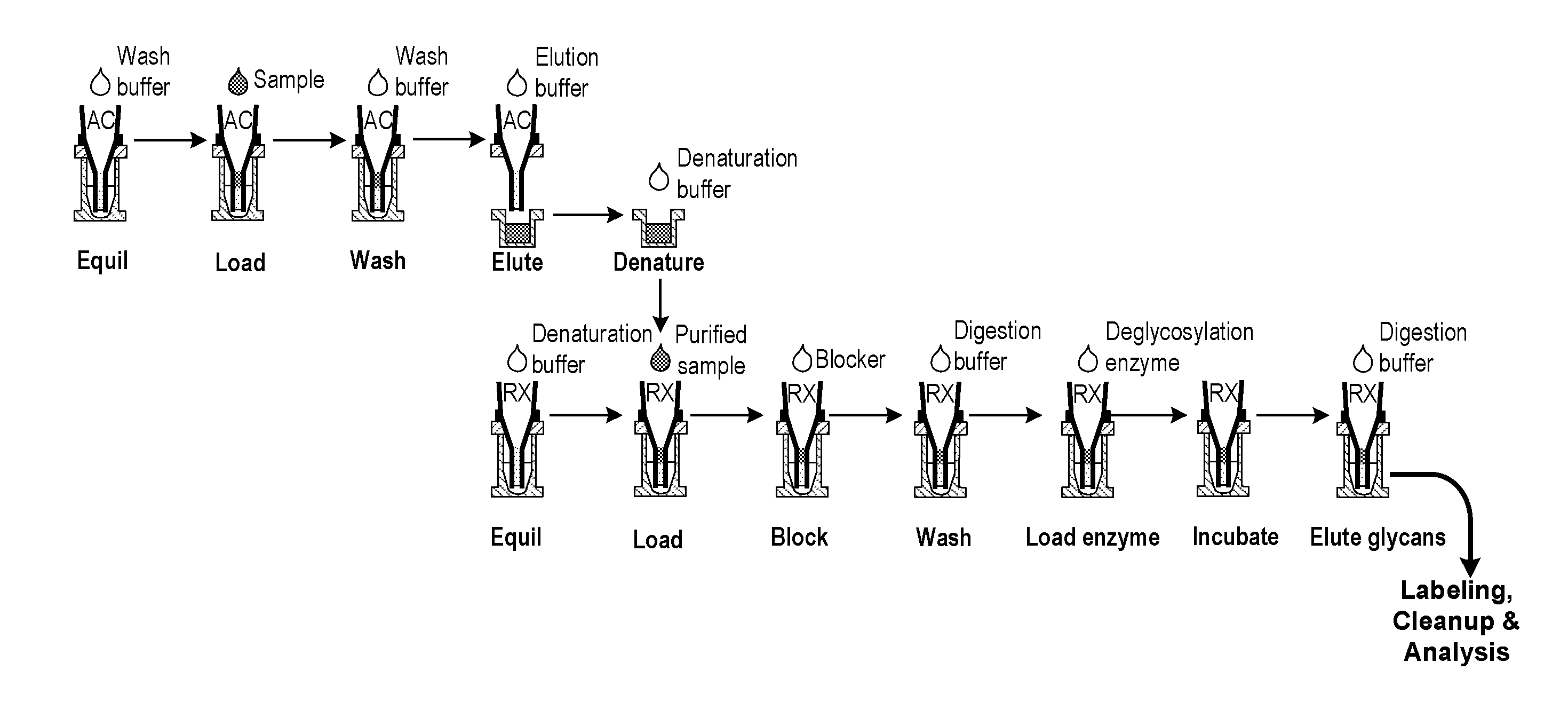Isolation and deglycosylation of glycoproteins
a glycoprotein and glycosylation technology, applied in the field of analysis of glycosylation patterns on glycoproteins, can solve the problems of incomplete release of glycans, inability to permit enzyme access, complex analysis techniques used to analyze glycans, etc., and achieve the effect of faster and convenient isolating
- Summary
- Abstract
- Description
- Claims
- Application Information
AI Technical Summary
Benefits of technology
Problems solved by technology
Method used
Image
Examples
example 1
[0048]In this study, hIgG (25 μg) in PBS was loaded on an AssayMAP™ PA cartridge (BioSystem Development, LLC., Madison, Wis.), which contains a 5-μL bed volume of an immobilized Protein A resin, and is operated as a spin column. After washing, deglycosylation was carried out in the same Protein A cartridge, and the released glycans were eluted with wash buffer. The HPLC glycan profile obtained after labeling and cleanup, shown in FIG. 3, is typical for hIgG.
example 2
[0049]This study was run as in Example 1 (FIG. 3), but the hIgG was spiked into a cell culture supernatant sample instead of PBS. As can be seen in FIG. 4, the N-glycan profile is virtually identical as that of FIG. 3.
example 3
[0050]In this study, the same sample (hIgG spiked into cell culture supernatant) was run as in Example 2, but the Protein A affinity purification and deglycosylation were run using separate purification and immobilization cartridges. The results are shown in FIG. 5. The resulting N-glycan profile was essentially identical to Examples 1 &2, although the total glycan recovery is somewhat lower.
PUM
| Property | Measurement | Unit |
|---|---|---|
| Nanoscale particle size | aaaaa | aaaaa |
| Absorbance | aaaaa | aaaaa |
| Phase | aaaaa | aaaaa |
Abstract
Description
Claims
Application Information
 Login to View More
Login to View More - R&D
- Intellectual Property
- Life Sciences
- Materials
- Tech Scout
- Unparalleled Data Quality
- Higher Quality Content
- 60% Fewer Hallucinations
Browse by: Latest US Patents, China's latest patents, Technical Efficacy Thesaurus, Application Domain, Technology Topic, Popular Technical Reports.
© 2025 PatSnap. All rights reserved.Legal|Privacy policy|Modern Slavery Act Transparency Statement|Sitemap|About US| Contact US: help@patsnap.com



